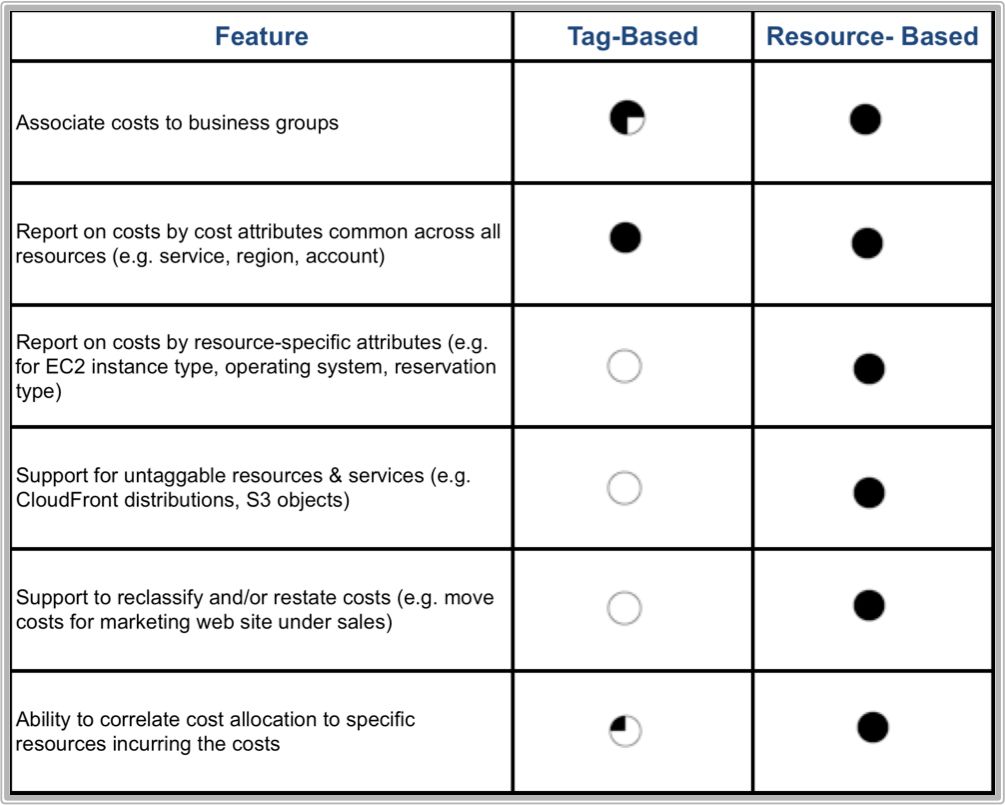
About Cloud Cost Allocation
Most organizations will have several different ways they want to report their costs. These perspectives will likely change over time and vary by stakeholder. For example, finance may want a monthly breakdown of costs by product line or shared environment; operations may need a cost breakdown by project or team; and engineering may want a cost breakdown by application role. While cost allocation of IT infrastructure has been a common and well understood practice for decades, its application to the cloud has been challenging due to the dynamic infrastructure, delegation of control, consumption-based pricing, and the increased scale of resources being managed.
What Are Tags?
Tagging was introduced by Amazon in 2010 as a way for customers to label AWS resources for organizational purposes. Using tagging, a customer might assign labels for categories such as department (e.g. marketing), product, environment (e.g. production), application (e.g. HRIS), customer, or application role (e.g. Cassandra). Once a resource is tagged, Amazon ensures usage associated with this resource is reported by this tag, allowing customers to more easily associate costs to different business perspectives.
Since the introduction of tags, Amazon has continued to expand its support for additional resources, and has added some higher level features that take advantage tags (e.g Cost Explorer). While tagging is almost always a core building block in any cost allocation solution, it does have some limitations you should be aware of. These include:
